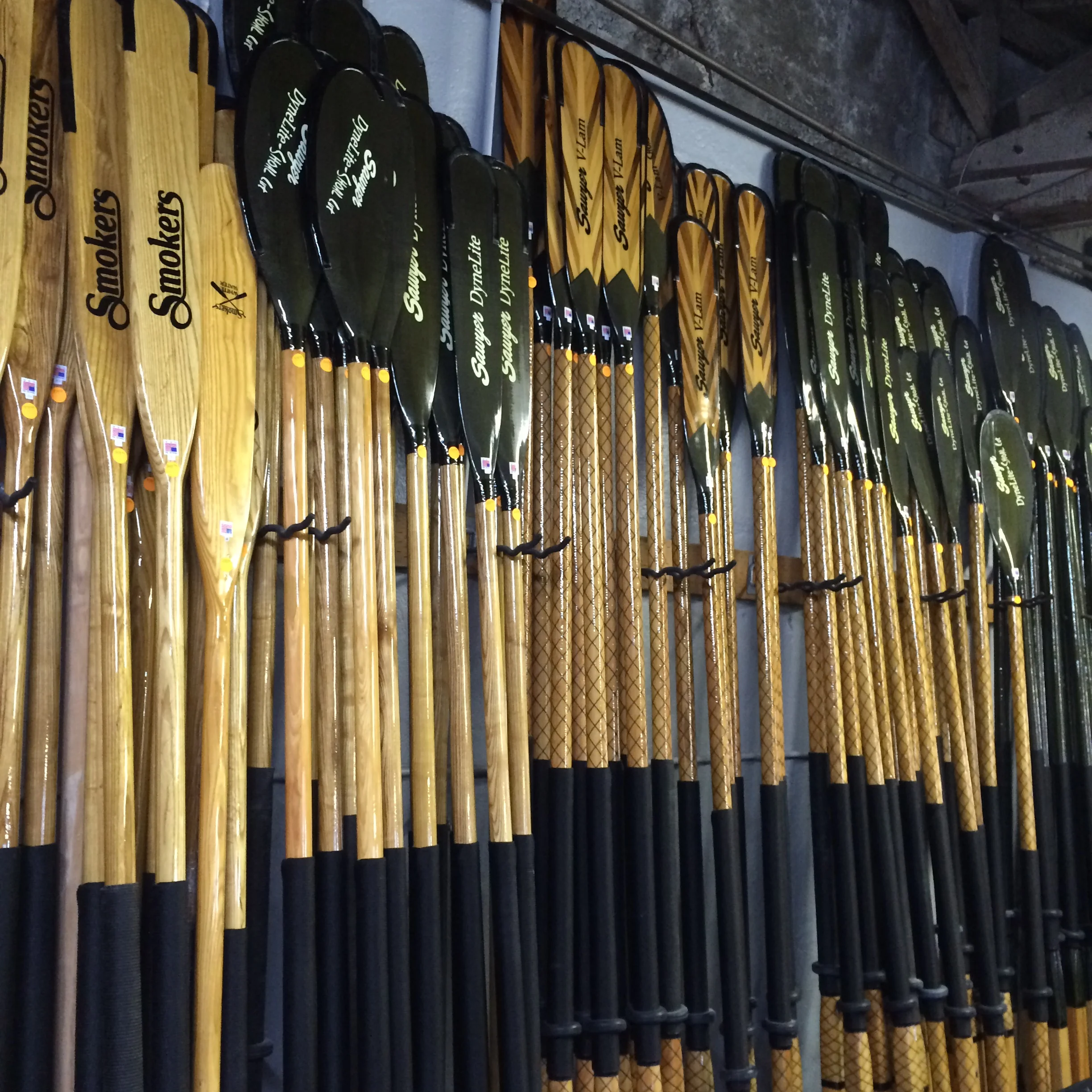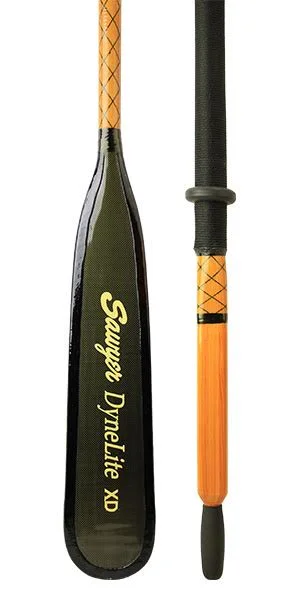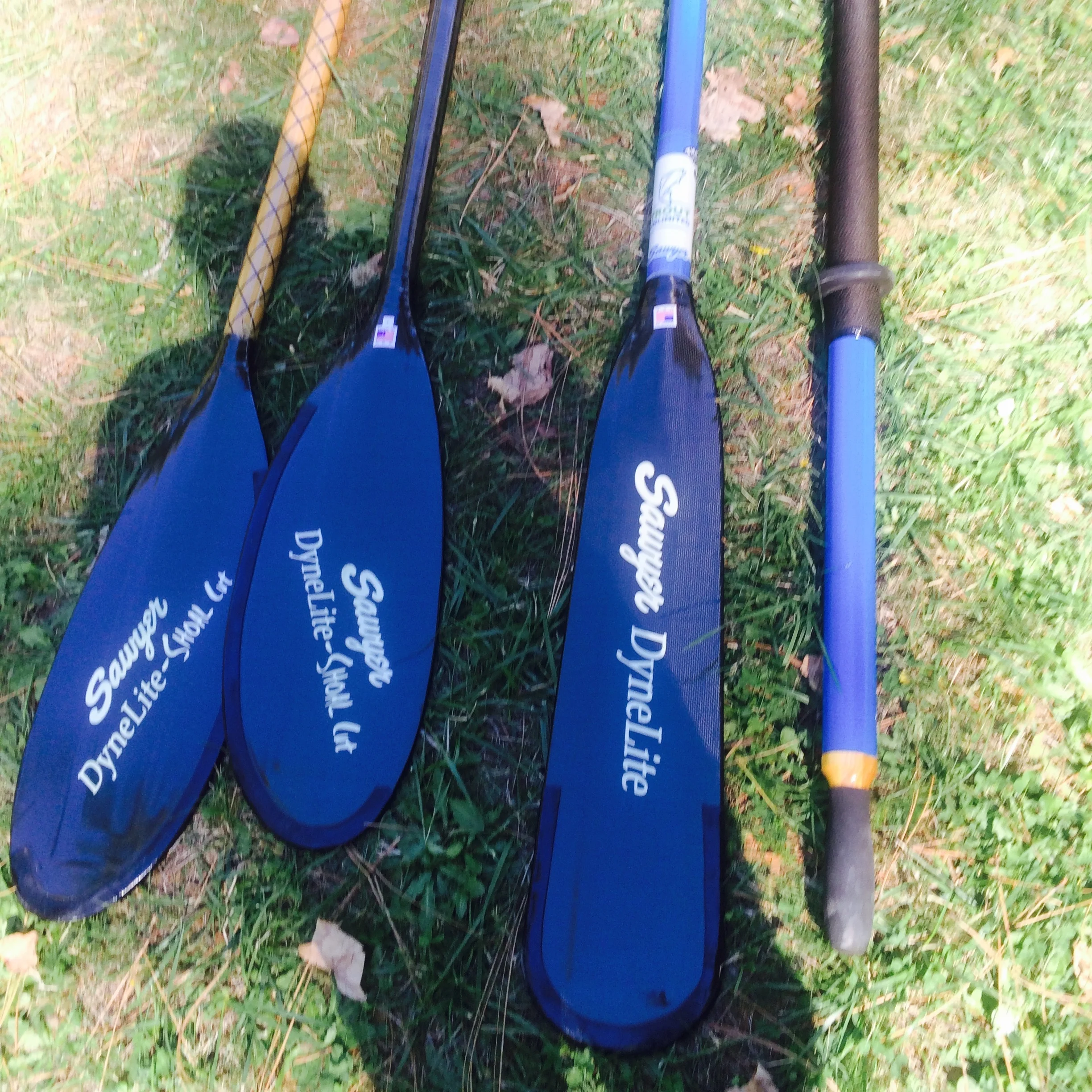The Gear Shed - Basic Oar Selection
Choosing The Best Oars for Rafting
With the daunting array of oars on the market coupled with a wild variety of opinions on what to get a lot of boaters find that getting a new set of oars can be a challenge to say the least. Multiple lengths, river types, opinions, and conjecture all cloud the topic of oars in general. To get to the bottom of it we asked our friends over at Sawyer Paddles and Oars to help us out on some insight on what types of oars are out there.
Materials
Oars come in many materials including Wood, Fiberglass, and Carbon Fiber being the most high performance materials. Plastic and Aluminum are also popular due to the price point only, since durability can suffer with these types of oars. High performance oars are usually composed of wood shafts with a fiberglass or carbon fiber reinforcement. Good blades will often be made out of a mix of carbon fiber and fiberglass.
Oar Length
When selecting a set of oars the most important guideline for rafts and drift boats is to have 1/3 of the oar on the inside of the oar lock and 2/3 of the oar on the outside of the oar lock. This can create a bit of a complex calculation. First measure the width of your oar frame from lock to lock. Now take that number and divide that by 2, this will be the length of oar on the inside of the lock. Next multiply that number by 3 to get the overall oar length that you need.
The formula is: ½ width from lock to lock X 3 = recommended overall oar length
Example: Let’s say that you have a 72” wide oar frame from lock to lock. Half the distance is 36” or 3 feet. Multiply by 3 and you will need a 9’ set of oars for your boat.
The Best Oar Blade Type
Wide Blades
These blades are incredibly useful when power is key to driving down currents or crossing tough eddy fences. The wide blade creates an even stronger pocket of high pressure on the trailing edge of the blade. This increased pressure differential will allow you to get the maximum amount of energy transfer from oar to your boat. Wide blades are the best choice for high volume river requiring lots of power for breaking through waves and munchy holes. Wide Blades are also the most recommended Blade for general purpose rowing since the largest variety of river out there will have plenty of room to maneuver a paddle raft.
Wide Blade vs Narrow Blade
Narrow Blades
Narrow blade oars are critical when finesse is key. Rowing highly technical whitewater requires a level of precision that larger blades simply cannot offer. Larger blades may produce more power, but they simply create too much drag on your blades when you feather or need to ship quickly for a tight drop. The narrow blade allows for quick precision movement by cutting down the drag and bulk. All of that extra material also can create a lot of fatigue throughout the day when you need to make small movements often. Technical whitewater will make sloppy rowing form caused by fatigue all the more arduous because of the pin potential. This blade is the go to for creek boating or any river that requires rapid maneuvering in and around features.
Shoal Cut Blades
Shoal cut blades are designed for rowing shallow water. These blades are best in low water conditions on wide river beds where small river cobbles can eat away at your oars. Additionally reinforcement points on these oars are dramatically different often covering an entire side of a blade where standard oars are typically reinforced only at the tips. The scooped blade combined with the more oval shape provides less surface area for the oar to catch on shallower rocks. Multi day trips on typically big water rivers in the late season or during dry spells can make trips very difficult with standard squared off oars. The design of these blades make them extremely popular with anglers in fishing rafts and can make some of the best drift boat oars since anglers are often running low volume rivers.
Oar flexibility, rigidity, and resilience
These dimensions of oar selection are the most critical for reducing fatigue and maximizing power out of each stroke. The flexibility power relationship in oars can create a synergistic rebounding effect or it can completely ruin your day. When you are rowing the oar is best imagined as a spring like lever. If the oar is too flexibility they will not rebound properly into their resting state causing the force to be dissipated in the water. The spring of the oar will slowly dissipate because it cannot create an area of high pressure on the trailing edge of the oar. If the oar is too stiff it will not be able to build up enough potential energy to rebound quickly. Either of these flexibility issues will create a huge amount a fatigue on your joints and muscles when you are rowing for multiple hours during the day. The bottom line is less strokes to run the same section of river will make for an enjoyable day on the water.
What are Oar Wraps?
Oar wraps are something that people seldom talk about. If you want your oar to last make sure that you get them wrapped or they come wrapped from the factory. The oar is sheathed in cord from just near the blade past the stop. This will prevent damage from the clip or lock grinding on the bare material of the oar. This can also help prevent damage from chips, ding and shredding from oar on rock interactions. An oar wrap is cheap insurance that your oar shaft will be protected.
Oar Stops
Oar stops come in many shapes and sizes. These rubber or plastic pieces prevent the oar from slipping out of the oar lock in one direction. The come in: Sheaths (~6” plastic tubes with a raised ring), Stops (a simple rubber or plastic ring that bolts around the oar, or Rights which are a variation of the stop (featuring a rubber or plastic bloc designed to fill in the top of the oar lock and keep your blades vertical).
What are the best oars for rafting?
The most important part of this question is what are you doing more than 50% of the time? Clearly the question is aimed at performance. You probably have a good idea of what your boating style is and what kind of rivers you prefer to run most of the time. A rowing rig is an expensive proposition, between the oars, locks, stops, frames, and any additional hardware you will need. You should also make sure that you have at least 3 oars on your boat. That way you will not be stuck on day 2 of a 5 day trip with one oar and 1 over-sized paddle if you break your oar.
If you have any questions about Oars please feel free to send us an email and ask any specific questions that you might have.
We want to extend a huge thank you to Zac Kauffman from Sawyer Paddles and Oars for his awesome support, insight, and photos on this topic.












